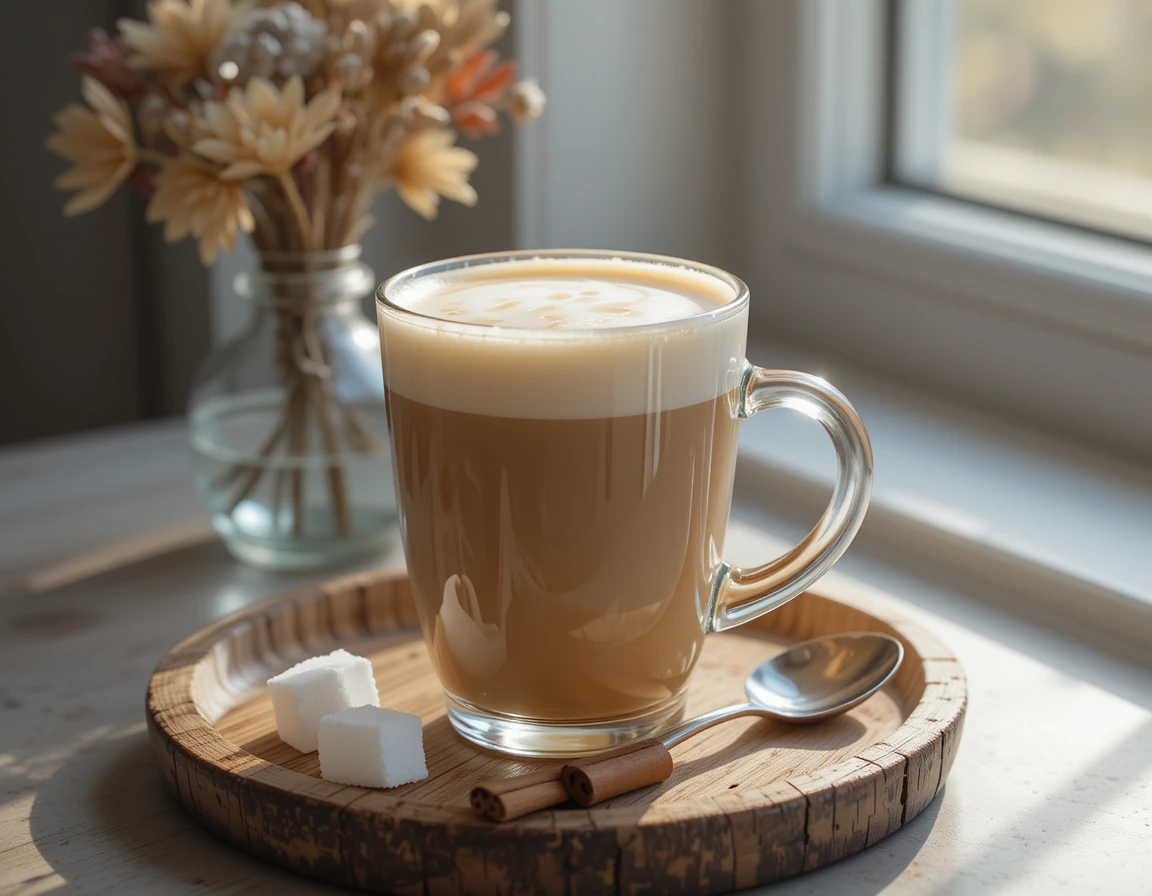How to Make White Coffee at Home ☕️ Easy & Delicious!
Table of Contents
Table of Contents
Have you ever found yourself standing in a long coffee shop line, wallet in hand, craving something different from your usual latte or americano? That moment of indecision in the coffee shop might just lead you to discover white coffee – a uniquely nutty, light-bodied brew that offers a smooth experience with higher caffeine content than your regular cup. The good news? You can create this distinctive coffee experience right in your kitchen, saving both time and money while exploring a new dimension of coffee flavor.

What Is White Coffee? Understanding the Basics
Before diving into brewing methods, let’s clear up what white coffee is. Despite its name, lightly roasted coffee isn’t white at all – it’s a light tan color resulting from a specific roasting process.
White coffee originates from two main traditions. Malaysian Lightly roasted coffee, also known as “kopi putih,” is made by lightly roasting coffee beans with margarine and then serving the brewed coffee with condensed milk. Middle Eastern traditions, particularly in Yemen, feature lightly roasted beans often flavored with hawaji, a spice mixture including cardamom, ginger, and sometimes cinnamon.
What makes white coffee truly distinctive is its roasting process. Unlike regular coffee beans that roast at temperatures between 450-480°F, lightly roasted coffee beans roast at just 200-325°F. This light roast preserves more of the bean’s original characteristics and results in:
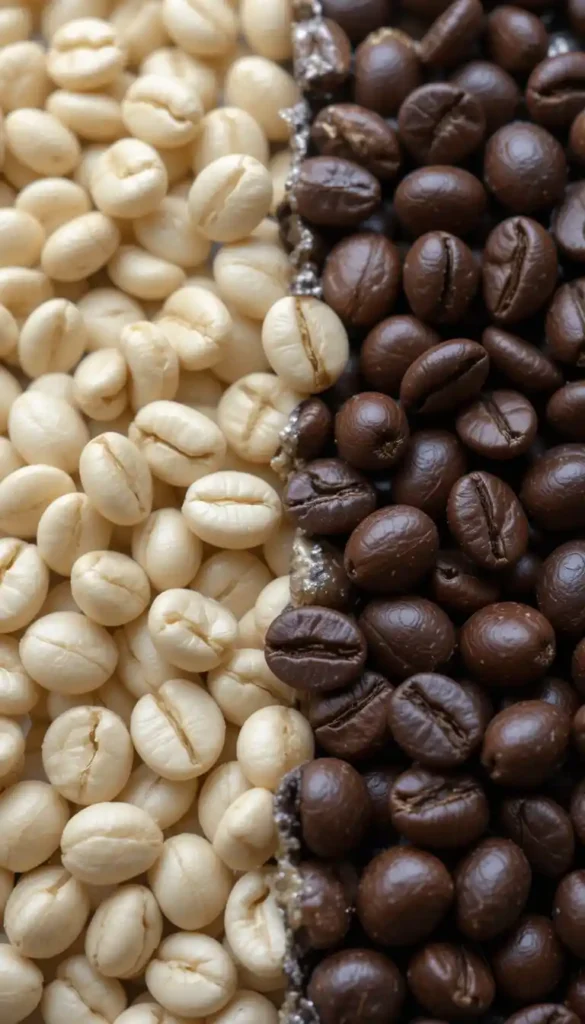
- A distinctive nutty flavor profile with subtle sweetness
- Higher caffeine content (up to 50% more than regular coffee)
- Significantly lower acidity than traditional roasts
- A lighter, yellowish-tan color when brewed
White coffee shouldn’t be confused with flat white (an espresso drink with steamed milk) or blonde roasts (which are still darker than Smooth light coffee). It represents a unique category in the coffee spectrum that more coffee enthusiasts are discovering each year.
Essential Ingredients and Equipment for White Coffee
Ingredients List
Creating authentic white coffee at home requires attention to these key ingredients:
- White coffee beans are roasted at lower temperatures than traditional coffee beans, resulting in a lighter roast.
- Filtered water: Clean, neutral-tasting water enhances the delicate flavors
- Optional additions:
- Condensed milk (for Malaysian style)
- Cardamom, cinnamon, or other spices (for Middle Eastern style)
- Sugar or sweeteners (adjust to taste)
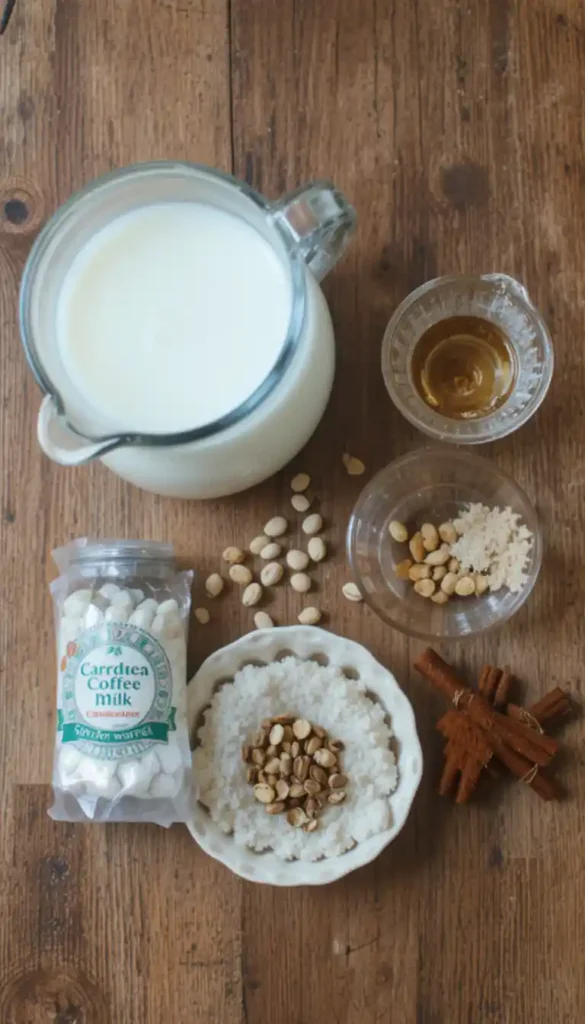
Required Equipment
While traditional preparation methods involve specialized equipment, you can create excellent white coffee with these tools:
- Coffee grinder: Must be capable of very fine grinding
- Brewing device: Moka pot, espresso machine, or AeroPress
- Measuring tools: For consistent results
- Heat source: Stovetop or electric heating element
Table: White Coffee Equipment Options
| Brewing Method | Pros | Cons | Price Range |
|---|---|---|---|
| Moka Pot | Affordable, authentic flavor | Learning curve | $20-40 |
| Espresso Machine | Professional results | Expensive | $100+ |
| AeroPress | Portable, consistent | Manual process | $30-40 |
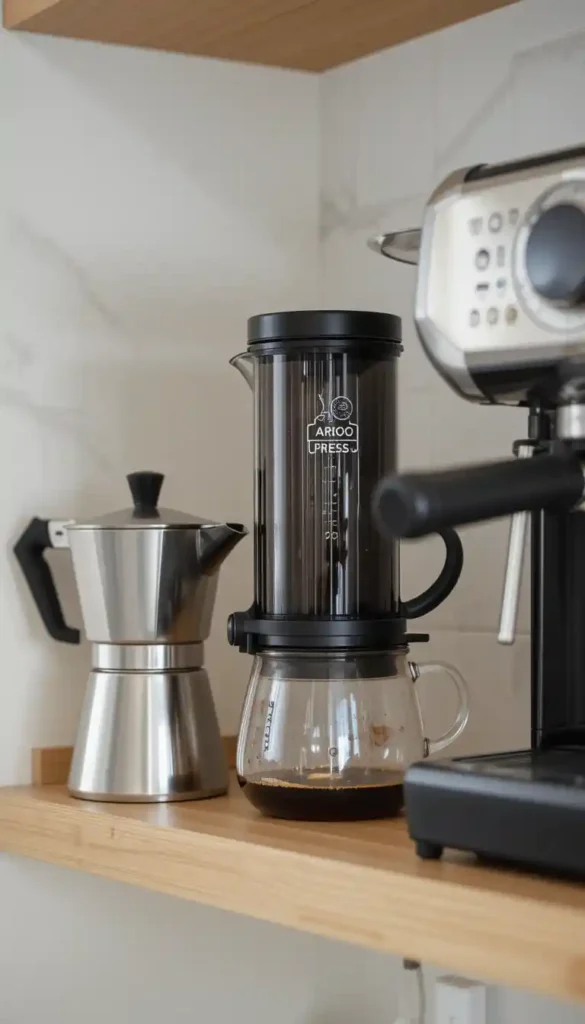
Step-by-Step White Coffee Brewing Guide
Preparing Your Beans
The foundation of excellent white coffee begins with proper bean selection and preparation:
- Source authentic white coffee beans from specialty retailers or light-roasted beans from local roasters
- Grind the beans to a very fine consistency, even finer than the typical espresso grind.
- Use immediately after grinding for optimal flavor
Pro tip: If you can’t find pre-roasted white coffee beans, don’t attempt to roast your own unless you have professional equipment. The specific temperature control required makes this difficult for home roasters.
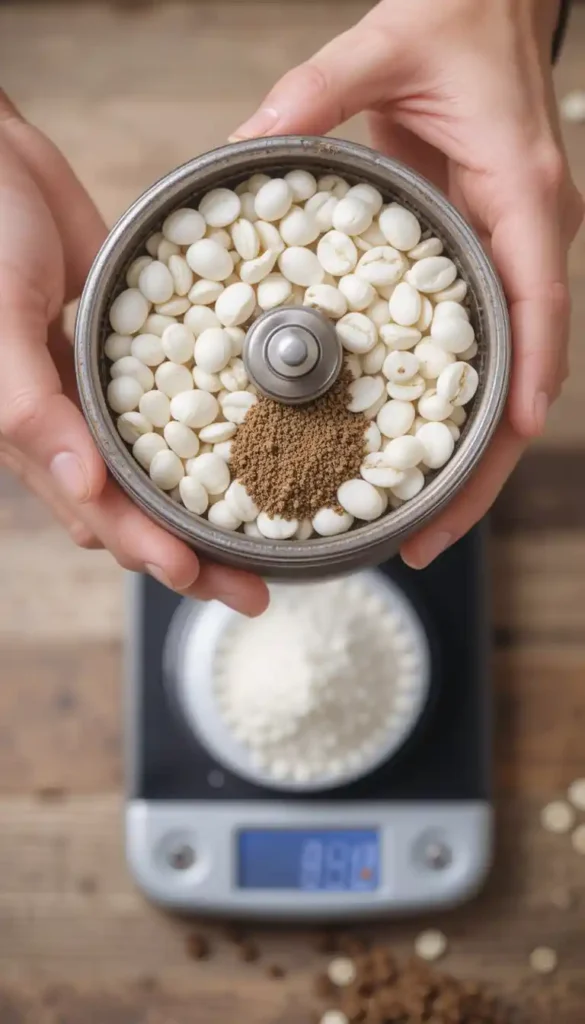
Moka Pot Method
The Moka pot creates a rich, concentrated brew that works wonderfully with white coffee’s unique properties:
- Fill the bottom chamber with filtered water just below the valve
- Add the finely ground white coffee to the filter basket, leveling it off without tamping.
- Assemble the pot and place it on low heat
- Remove from heat as soon as coffee begins steadily flowing into the upper chamber
- Serve immediately with your preferred additions
Espresso Machine Method
For those with espresso machines, this method delivers excellent results:
- Pack ground white coffee firmly into your portafilter
- Use slightly lower pressure settings than standard espresso if adjustable
- Pull a shot lasting approximately 25-30 seconds
- The result should have a light tan crema and pronounced nutty aroma
Traditional Malaysian White Coffee Recipe
The classic Malaysian preparation incorporates condensed milk for a creamy, sweet finish:
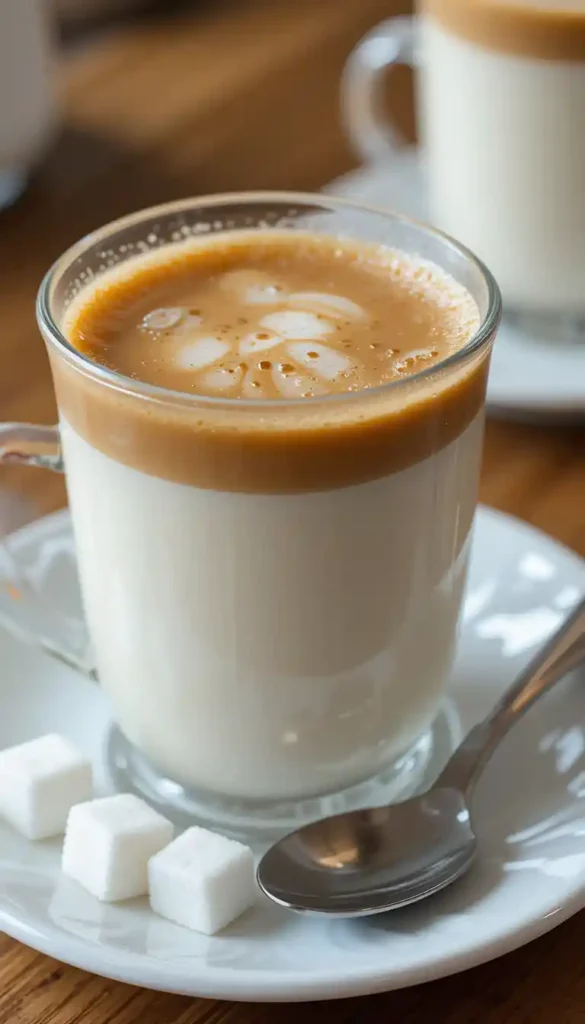
Table: Malaysian White Coffee Ingredients
| Ingredient | Quantity | Notes |
|---|---|---|
| White coffee grounds | 2 tablespoons | Very finely ground |
| Filtered water | 6 oz | Just below boiling |
| Condensed milk | 2 tablespoons | Adjust to taste |
| Sugar (optional) | 1 teaspoon | Traditional addition |
Preparation steps:
- Brew white coffee using your preferred method
- Warm a serving cup by rinsing it with hot water
- Add condensed milk to the warmed cup
- Pour freshly brewed white coffee over the condensed milk
- Stir gently to combine
- Sprinkle with additional sugar if desired
The condensed milk creates a beautiful layering effect when done properly, making this as visually appealing as it is delicious.
Flavor Variations and Customizations
One of white coffee’s greatest strengths is its adaptability to different flavor profiles. Here are some popular ways to customize your cup:
Classic White Coffee Additions
- Condensed milk: Creates the traditional Malaysian white coffee experience
- Evaporated milk: Less sweet than condensed, but still creamy
- Plant-based milk alternatives: Oat milk pairs particularly well with white coffee’s nutty notes
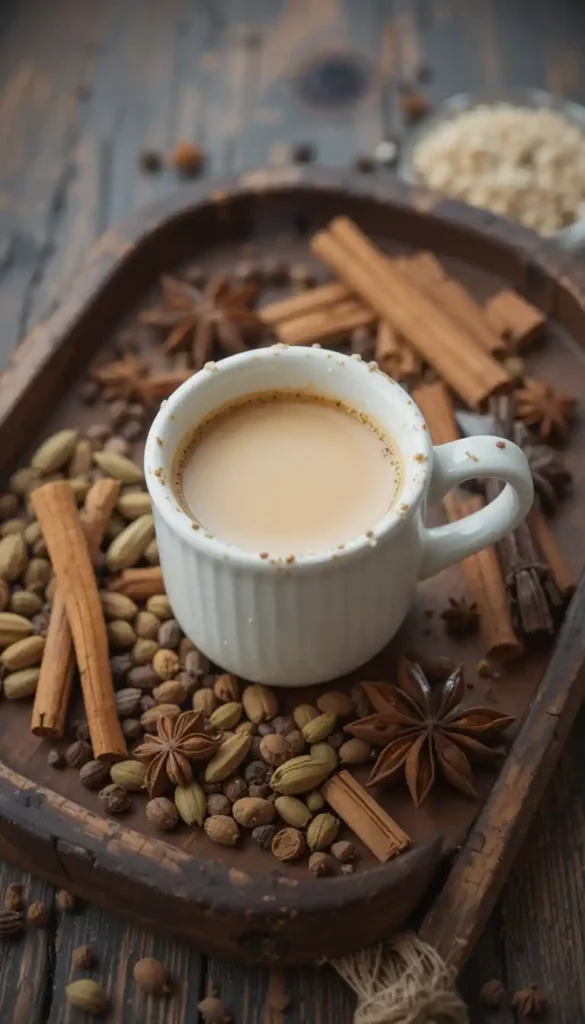
Spice Infusions
Middle Eastern traditions highlight these complementary flavors:
- Cardamom: Add a crushed pod to your grounds before brewing
- Cinnamon: Either add a small piece to your grounds or sprinkle ground cinnamon on top
- Star anise: Provides a subtle licorice note that enhances white coffee’s natural sweetness
“The beauty of white coffee lies in its versatility; its subtle, nutty profile makes it the perfect canvas for creative flavor combinations. Unlike darker roasts that can overpower delicate flavors, white coffee welcomes experimentation.” – Coffee enthusiast
Signature White Coffee Creations
Try these combinations for an elevated experience:
- Honey-cardamom white coffee: Stir in a teaspoon of raw honey and a pinch of ground cardamom.
- Vanilla-cinnamon blend: Add a few drops of vanilla extract and a sprinkle of cinnamon
- Coconut white coffee: Use coconut cream instead of milk for a tropical twist
Troubleshooting Common White Coffee Problems
When Your White Coffee Tastes Bitter
Unlike darker roasts, white coffee should never taste bitter. If yours does, consider these adjustments:
- Check your grind size: Too fine can cause over-extraction
- Lower your water temperature: White coffee extracts best at slightly lower temperatures (195-200°F)
- Shorter brewing time: White coffee requires less contact time than darker roasts
- Verify bean quality: Ensure you’re using fresh, properly stored beans
Achieving the Perfect Consistency
White coffee typically has a lighter body than traditional coffee. To achieve the ideal consistency:
- Use a slightly higher coffee-to-water ratio than you would for regular coffee
- For espresso methods, consider a longer pre-infusion time
- If using paper filters, pre-wet them to prevent absorption of essential oils
- Serve immediately after brewing for optimal flavor and mouthfeel
Health Benefits and Considerations
White coffee offers several potential advantages compared to traditional roasts:
Caffeine Content Comparison
Due to its lighter roast, white coffee retains more caffeine than darker roasts, making it an excellent choice for those seeking a stronger energy boost.
Table: Caffeine Comparison
| Coffee Type | Caffeine Content (6 oz) | Acidity Level |
|---|---|---|
| White Coffee | ~70-100mg | Low |
| Light Roast | ~60-80mg | Medium-High |
| Dark Roast | ~50-70mg | Medium |
Gentler Digestive Experience
Many coffee drinkers who experience digestive discomfort with regular coffee report fewer issues with white coffee, likely due to:
- Lower acidity levels
- Fewer of the compounds formed during extended roasting
- Different compositions of oils and chemical compounds
Note: While white coffee is often gentler on the stomach, individual reactions may vary. If you have caffeine sensitivity, remember that white coffee contains more caffeine than darker roasts.
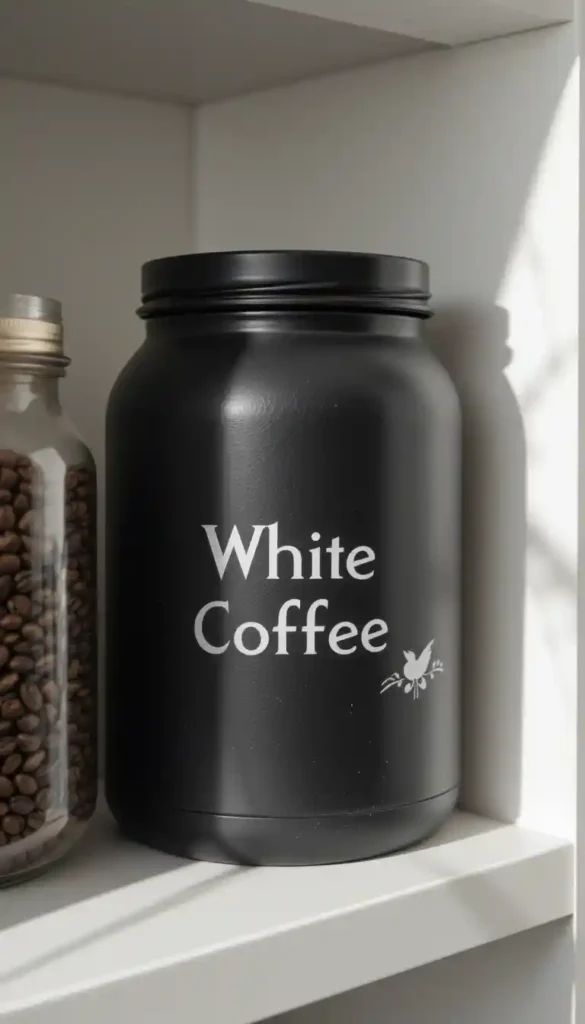
Where to Find Quality White Coffee Beans
Sourcing authentic white coffee beans can be challenging but worth the effort:
- Specialty coffee roasters: Some now offer white coffee options
- Online retailers: Several companies specialize in importing Malaysian or Middle Eastern coffee varieties
- International markets: Particularly those carrying Malaysian or Middle Eastern products
- Direct from producers: Some coffee farms now ship internationally
Look for beans specifically labeled as “white coffee” rather than just light or blonde roasts. True white coffee beans have a pale, yellowish appearance and distinctly hard texture.
Storing and Preserving White Coffee
To maintain optimal flavor:
- Store the beans in an airtight container, keeping them away from light, heat, and moisture.
- Keep at room temperature rather than refrigerating
- Use within 2-3 weeks of roasting date
- Grind only the amount you need just before brewing for the freshest flavor.
White coffee beans are notably harder than conventional beans due to their minimal roasting, so ensure your grinder can handle their density. Many home brewers use dedicated grinders specifically for white coffee.
From Novice to Expert: Perfecting Your White Coffee
As you become more comfortable with brewing white coffee, consider these advanced techniques:
- Experiment with water minerality (different bottled waters or mineral additions)
- Try different filtration methods (metal vs. paper filters)
- Adjust brewing parameters systematically, keeping notes on your results
- Create your signature blend by combining white coffee with other light roasts
The path to white coffee expertise involves experimentation and attention to detail, but the unique flavors you’ll discover make it worthwhile.

Conclusion
Brewing white coffee at home opens a door to a different coffee experience – one with distinctive nutty notes, higher caffeine content, and endless customization possibilities. Whether you’re drawn to the traditional Malaysian preparation with condensed milk or prefer exploring Middle Eastern spice combinations, white coffee offers a refreshing change from conventional brews.
By understanding the unique properties of white coffee beans and mastering the brewing techniques outlined here, you’re equipped to create café-quality drinks that showcase this special coffee variety’s distinctive character. Start with quality beans, pay attention to your grind and brewing parameters, and don’t be afraid to experiment with different additions and serving methods.
Ready to elevate your home coffee experience? Try brewing white coffee this week and discover what coffee enthusiasts around the world have been enjoying for generations – a smoother, nuttier, more caffeine-rich alternative to conventional coffee.
Frequently Asked Questions About White Coffee
What makes white coffee different from blonde roast coffee?
White coffee undergoes significantly less roasting than even the lightest blonde roasts, stopping at around 325°F versus 380-410°F for blonde roasts. This results in white coffee’s unique nutty flavor, harder beans, higher caffeine content, and lighter color.
Can I make white coffee without special equipment?
While specialized equipment enhances the experience, you can approximate white coffee using regular brewing methods with very finely ground light-roasted beans. An AeroPress or Moka pot offers the most accessible entry points for home brewers.
Is white coffee white in color?
Despite its name, brewed white coffee is not white; it has a lighter tan color compared to traditional coffee. The name refers primarily to the roasting process rather than the final beverage color, though when served with condensed milk (Malaysian style), it does have a lighter appearance.
Where can I find authentic white coffee beans?
Look for specialty coffee retailers online that specifically sell white coffee beans, or check with local roasters who might offer custom light roasts. Authentic Malaysian white coffee products are increasingly available through international food markets and online importers.
What is the shelf life of white coffee after roasting?
White coffee beans maintain peak freshness for 2-3 weeks after roasting when stored properly in airtight containers away from light, moisture, and heat. Because they’re less porous than darker roasts, they may retain flavor slightly longer than conventional beans.
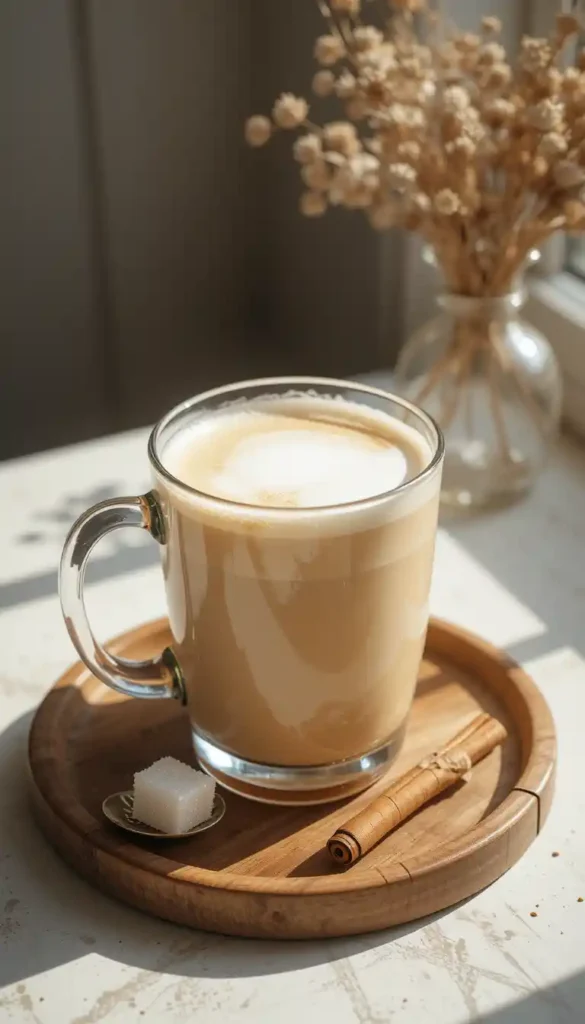
Can I use white coffee in cold brew preparations?
Yes, white coffee can be used for cold brew, though it requires a longer steeping time (18-24 hours) and coarser grind than hot brewing methods. The result offers a uniquely smooth, low-acid cold coffee with subtle nutty notes and higher caffeine content than regular cold brew.
Ready to Brew Your First Cup of White Coffee?
Give this unique and flavorful recipe a try, and let us know how it turns out. Did you enjoy the Malaysian version with condensed milk, or did you add your creative twist?
Leave a comment below to share your experience, and don’t forget to rate the recipe if you found it helpful. Your feedback helps others discover and enjoy white coffee, too.
Looking for more delicious ideas? Check out our guides on pour-over coffee and sugar-free chocolate recipes to pair with your cup.
Want weekly recipes and brewing tips? Subscribe to our newsletter or follow us on Instagram @JoyfulCakes for more homemade goodness straight to your feed.
Git more recipes you might like
- Top 10 Cake Recipes.
- Cookie Cereal Recipe.
- Artesano Bread.
- Aphrodisiac Chocolates.
- Perfect French Press Coffee.
- Venetian Ice Cream Flavors.
Did You Try Our Recipe?
There are no reviews yet. Be the first one to write one.

